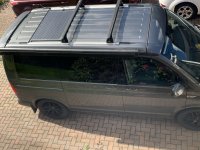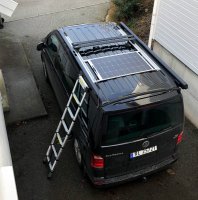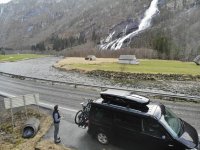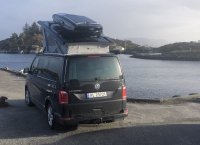G
GrumpyGranddad
Guest User
I am intending to install a solar solution in my Ocean 6.1 when it eventually arrives later this year. My dilemma is whether to go for a fixed solution with panels on the roof or whether to go for ‘portable’. I’m leaning towards a solution where the charge controller and remote display unit are permanently installed in the van but with the solar input terminating at a socket (either inside near the shower connector or maybe outside the van). The portable panel(s) with a long lead would then be plugged in when needed.
My thinking is as follows but is maybe flawed?
So i’d really appreciate feedback from those of you who already use and have experience of using solar.
Advantages of fixed =
1. Fit and forget
2. Always on
Disadvantages of fixed =
1. Solar not needed when driving as engine provides charge.
2. Solar not needed when on mains hook up.
3. Roof mounted solar not efficient if parked in shade or van orientation is wrong
4. Roof mounted panels make it difficult to clean van roof under the panels
5. Connecting cable unsightly (In my opinion) and potentially damages paintwork.
6. Unable to fit roof box etc.
Advantages of portable =
1. Positioning of panels is flexible to maximise sun’s charge.
2. Leaves roof free for mounting roof box or other kit.
3. Allows whole roof to be cleaned.
Disadvantages of portable =
1. Not always on
2. Setup time at campsite
3. Higher risk of theft of panels.
4. Valuable van storage space taken up by the panels.
My thinking is as follows but is maybe flawed?
So i’d really appreciate feedback from those of you who already use and have experience of using solar.
Advantages of fixed =
1. Fit and forget
2. Always on
Disadvantages of fixed =
1. Solar not needed when driving as engine provides charge.
2. Solar not needed when on mains hook up.
3. Roof mounted solar not efficient if parked in shade or van orientation is wrong
4. Roof mounted panels make it difficult to clean van roof under the panels
5. Connecting cable unsightly (In my opinion) and potentially damages paintwork.
6. Unable to fit roof box etc.
Advantages of portable =
1. Positioning of panels is flexible to maximise sun’s charge.
2. Leaves roof free for mounting roof box or other kit.
3. Allows whole roof to be cleaned.
Disadvantages of portable =
1. Not always on
2. Setup time at campsite
3. Higher risk of theft of panels.
4. Valuable van storage space taken up by the panels.

















